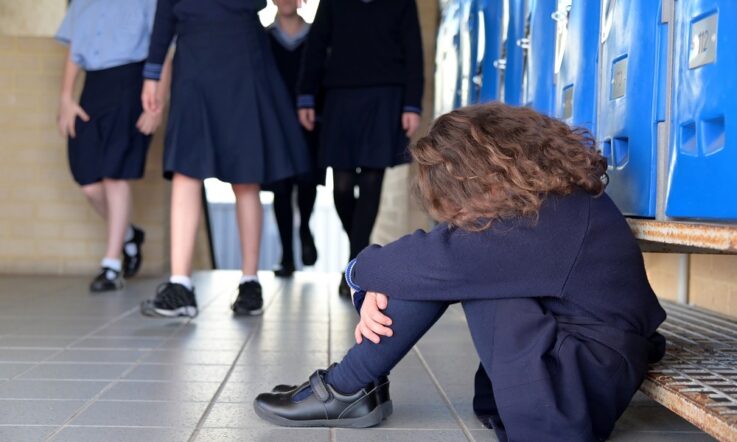Thanks for tuning in to this episode of Teacher Staffroom, where we catch you up on the latest evidence, insight, and action in education. I'm Dominique Russell.
How would you describe the culture at your school? I’m sure there are many words that come to mind as you might be thinking about your school’s shared goals, beliefs, values and priorities. Recently at Teacher, we’ve shared some stories that look at various elements of school culture – from building a culture of reading for pleasure, to ensuring an environment where staff can ask for help if they need it.
In today’s episode I’m going to get you up to speed on these stories, and also some more of my highlights from content we’ve recently published in case you might have missed it. And, like all episodes of Teacher Staffroom, I’ll be posing some questions throughout the podcast, so feel free to pause the audio as you go, gather some colleagues, and discuss together how these stories might be relevant to your school context. Let's jump in.
It was R U OK? Day recently, which is all about asking those around you ‘are you okay?’. In the lead up to the national day, we spoke with Claire Goodall from R U OK? about how schools can build a culture where staff can feel safe, included and valued. She also shared some practical information in the article on how you can identify if a staff member might need some extra support; steps you can take if a colleague tells you they aren’t okay; and some good first steps for asking for help if you need it.
There’s one section in particular I’d like to highlight with you in this episode which is where Claire discussed considerations for schools when thinking about building a safe and inclusive culture. Here’s what she had to say:
Building in time to acknowledge staff contributions, celebrate school successes and providing opportunities for staff to play a role in decision making can help build an environment where staff feel valued and comfortable. Regularly checking in when things are going well is just as important as checking in when you are worried about someone, as this can help build a culture of respect and trust.
This brings me to some questions for you to think about and reflect on. Have you noticed any changes in how any of your colleagues are acting recently, for instance, a colleague who is becoming more withdrawn and lacking confidence or self-esteem? If so, can you think about a quiet place you could ask them if they are okay? As well as this, consider who you feel most comfortable talking to when you aren’t okay. Is there another staff member you can reach out to at work?
This culture of support is something that came through from another story of ours which looked at how schools can support students experiencing prolonged absences due to serious illness. It’s something many schools deal with and can be challenging to navigate.
We spoke with Jennifer Hoare, Year 5 teacher at a school in New South Wales, about her experience with supporting students during periods of prolonged absences. In this article, she reflected on her experience supporting a student through cancer treatment, and the initiatives the school put in place to assist the student, their family and their peers.
She shared the positive impact of the school community coming together at this time, and the importance of responding with compassion and with care. Here’s what Jennifer had to say:
I didn’t feel like as a teacher I was on my own, I felt that the parents rallied together really well, collaboratively, in that we could think of different ways to show our support. And as a staff, we rallied together really well and the whole school community were all very aware of how we could all help as a community.
Changing gears a bit now, to highlight a high school in Victoria being really innovative when it comes to ensuring more students have the opportunity to participate in the physical activity they enjoy. We spoke with Travis McKenzie who initiated a Swords Club for students at his school who may not be interested in more traditional team-based sport.
In the article, Travis shared how successful the program has been, and the positive impact it’s had on students. It’s not just been that students can spend more time being physically active, but that they are now more engaged and have been able to make strong social connections with peers.
Here’s what Travis had to say about the inclusivity of the program as a whole:
And in terms of inclusivity, you don’t need any experience to be able to pick up a sword. There’s something very instinctive about it… Because it’s just not about how big you are or strong you are … all that size difference is out and they just go. And seeing that, I think, that’s just such an amazing thing.
So, here’s another question for you to think about. Reflect on what sports are on offer (and which sports are celebrated) in your school setting. Is there capacity for schools to introduce non-traditional sports into the curriculum or to establish extra-curricular opportunities for students to be physically active?
Moving from sport to literacy now, and let’s take a look at how one school in Sydney has successfully built a culture of reading for pleasure over the last 2 years. Vanessa Collins, Curriculum Director at Queenwood School for Girls’ Junior School, shared how embedding scheduled time for daily reading for pleasure into the curriculum for students and staff has improved literacy outcomes, and overall wellbeing for the school community.
The impact on wellbeing was measured through staff and student surveys, which showed that staff had observed the program’s ability to help students switch off, calm down and refocus. As well as this, students mentioned a link between reading for pleasure and a decrease in their stress levels.
In the article, Vanessa also explained how important the consistency of the program was on improving outcomes, and also how impactful the teacher modelling aspect was, which involves staff participating in reading for pleasure alongside their students. Here’s what Vanessa had to say about this:
I would strongly recommend that teacher modelling should occur in any silent reading model. You just wouldn't believe how observant those students are about the adults and what they're doing. The role modelling aspect definitely led to a building of common grounds between the teachers and students. And in all the classrooms, I think that only serves to enhance the classroom experience around literature for all of them.
Now, here are a few questions to think about on this topic. How would you describe the culture of reading at your school? Is there room for improvement? As a school leader, do you model reading for pleasure? Do you encourage staff to read for pleasure? In what ways could you inspire staff and students to read for pleasure on a regular basis, and also discuss the books they are reading?
An important part of building and maintaining a school’s culture is the example set by its leaders. In our most recent episode in our School Improvement podcast series, Principal at Kingston State School in Queensland, Trent Cowley, shared how he leads by example in his school setting by being a visible leader. Here’s what Trent had to say:
So for me, being visible is being that visible leader in a school, and leading by example, and being out there talking with everyone. Taking the time before and after school to meet with parents, to listen to their concerns if they've got them, or just to have a chat and genuinely invest in people, because we're in the business of people in education. So, you know, we have to invest the time to get to know one another. And then I feel that's the best way to build that strong culture in a school.
So, in that clip just there, Trent Cowley shared that to him, being a visible leader means being visible in the school, leading by example, and frequently communicating with all members of the school community. That brings me to a question for you to think about as a school leader. Think of a recent example where you checked in with a student, staff member, and parent or carer in your school community. What did you learn from each of these experiences?
And finally, you might be aware that we recently launched a brand new podcast series called School Assembly. In the series, we follow Principal Ray Boyd and Associate Principal Rachael Lehr as they navigate the journey of building a new school from the ground up. Each month, we touch base for updates and reflections on their progress as their new school, Dayton Primary School, is built in the newly developing suburb of Dayton, located in the eastern metropolitan city of Swan in Perth, Western Australia.
We’re now on episode 2 of the series, and in the most recent episode, Ray and Rachael discuss how they are prioritising short- and long-term goals, responding to unexpected hurdles, and managing workload. Here’s what Ray had to say about responding to hurdles:
Well obviously you can’t plan for it. When something happens, we’ll talk it out. Most things – there’s nothing super urgent. The only time we get urgent stuff come through is when the builder or the project manager contacts us to say there’s been a bit of a change in plan, or around stock or something like that because of supplies, and we have to think quickly around that side.
But in terms of anything unexpected, anything unexpected that does come up, we just work through it. Where does it sit in terms of what we’re trying to do? Is it important? Do we have to worry about it? In the big scope of things is it going to make a huge difference? And then we know whether we need to push back or fight harder for that.
So, that clip there brings me to one final question to reflect on for this episode. As a principal, how do you distinguish between the things you are able to change at your own school, and those that are out of your hands? Are these things you can delegate, postpone, or let go of altogether?
That's all for this episode, and now you’re all caught up on the latest evidence, insight and action. Links to all the content and the resources I’ve mentioned will be in the transcript of this podcast available over at our website, teachermagazine.com.
Subscribe to our podcast channel wherever you get your podcasts from, so you can be notified of any new episodes as soon as they land. If you want to keep listening now, you can access the 200+ episodes already in our archive. And, while you’re there, we’d love if you could rate and review us.



